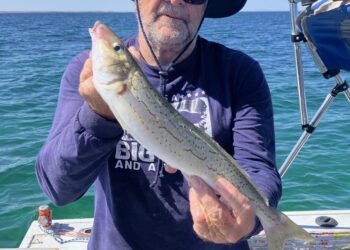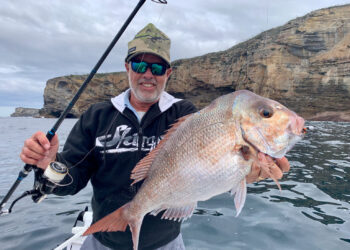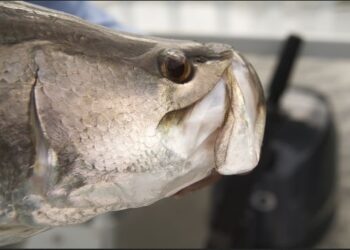THE NSW Research Angler Program (RAP) was established by the NSW Department of Primary Industries to aid in managing stocks of iconic fish species.
The program started with the mulloway, or jewfish, which in NSW is under considerable pressure due to its popularity with both recreational and commercial fishermen. This program utilises the estimated one million rec fishers statewide to lend a hand, by obtaining mulloway frames from retained fish.
The program initially began with frame and head donation of captured fish in spring of 2013, and is currently still going as of today. Anglers are encouraged to keep the frames and or head and donate to the nearest drop off location (see below for drop off locations). Information of the angler, length, date and rough location of capture is required.
Be assured, angler information is kept confidential to protect those secret possies! There is a monthly random prize of tackle store gift vouchers and other goodies for contributing anglers, so details are required if your name is selected.
The frames are processed in a laboratory to determine sex, length and reproductive state. This enables researchers to build an age structure of the overall population to determine the health of mulloway. Interestingly, while mulloway can live well beyond 30 years, the majority of NSW stock is well below that in the five-year-old bracket.
Despite this fact some very prized and trophy sized fish have been donated – the top five length fish are all beyond the 1.5m mark!
DPI were quick to realise that only a portion of information can be obtained from captured fish frames and that a live fish operation was the second phase of the Research Angler Program.
Recently the the RAP included a tagging program for released fish. Stan Konstantaras and Chris Anagnostou from ANSA contributed their time and resources to help lead a tagging program. The program started as a small pilot project with a wide spectrum of anglers selected to help evaluate NSW for much larger scale project open to all anglers. I was one of the anglers selected to help in the Sydney region, and I was all too happy to help.
It began with 25 taggers statewide and quickly rose to around 50 as word got around. Stan and Chris in conjunction with the RAP decided to limited it to this number. While they greatly appreciate all the rec anglers who expressed interest, the program, due to funds, time and evaluation needed to remain at this level. Obviously if the program and information obtained proves to be a success, a much larger program will be undertaken.

The night move – tagged fish program contributor Chris Cleaver with a fish tagged and ready for release.
The mulloway are simply tagged with a NSW DPI gamefish tag below the dorsal fin; so be sure to keep an eye out for any with tags. Anyone catching a tagged fish is urged to re-release it and note the tag number, length, date and Location. While it is up to the angler whether or not they wish to keep the fish, the DPI urges the captor to email all of the aformentioned info to the following: Julian.Hughes@dpi.nsw.gov.au or Stan Konstantaras at pastelli@netspace.net.au.
To date there have been some impressive numbers of fish tagged and interesting information gathered, considering the program has run for a short period of time:
- A total of 61 fish have been recorded to the data base with more fish daily;
- South Coast/Batemans Bay account for 8 per cent of tags to date
- Sydney Metro accounts for 47 per cent of tags to date
- Coffs Harbour/Far North Coast accounts for 44 per cent of tags to date
Of particular note is that 88 per cent of the tagged fish have been caught on lures, which should bode well for survival rates as most lure caught fish are mouth hooked.
Size range is beginning to spread with the largest fish being two specimens of 107cm respectively – one from South Durras and another from Botany Bay. It won’t be long until a larger fish is tagged. Unfortunately, I’ve had a few large fish win their freedom lately and Wade Eaton of Batemans Bay has landed two fish excess of 120cm that could not be revived for tagging.

Tagging numbers:
- 60cm – 3 tags
- 60-70cm – 32 tags
- 70-80cm – 16 tags
- 80-90cm – 5 tags
- 90-100cm – 3 tags
- 100-110cm – 2 tags
Personally, I think this is great program and I eagerly await the first tagged fish to be re-caught. Shimano, in Conjunction with NSW DPI, Stan and Chris, will award a prize for the first tagged jewfish capture which provides correctly recorded info.
A big thanks to all anglers involved, NSW DPI, Stan Konstantaras and Chris Agonostou for being involved in the Research Angler Program.
Stay tuned for future updates.





















